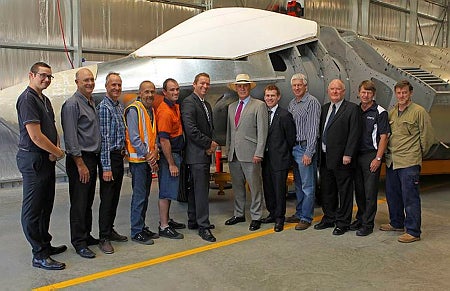

The Australian Department of Defence (DoD) has introduced a full-scale model of the F-35A Lightning II joint strike fighter (JSF) to help study the impact of electromagnetic compatibility and interference on the aircraft.
Known as Iron Bird, the domestically-manufactured model is scheduled to be tested by the Defence Science and Technology Organisation (DSTO) under simulated electromagnetic conditions during the acquisition and through-life sustainment of the F-35 fighter.
Speaking during the unveiling ceremony, Australian defence science and personnel minister Warren Snowdon said the study represents a critical part of ensuring the JSF’s protection against electromagnetic environmental effects, including lightning and static discharge that can impair its performance and safety.
”The impact of these interferences needs to be well understood and appropriately managed,” Snowdon added.
”The data captured will help in providing potential reductions in the cost of owning the JSF fleet and enhancing the aircraft’s capability.”
Carried out in collaboration with the US JSF Joint Project Office, the cost-effective study is expected to support the verification for compliance and airworthiness certification for the aircraft.
Currently under production by Lockheed Martin, the F-35 is a fifth-generation aircraft featuring complex electronics, sophisticated software and a structural airframe built from composite materials that increases exposure to electromagnetic interference from both naturally occurring phenomena and telecommunication transmissions and radars.
Powered by a single Pratt & Whitney F135 engine, the aircraft is designed to conduct ground attack, reconnaissance, and air defence missions with stealth capability.
The Royal Australian Air Force’s (RAAF) first two F-35A conventional take-off and landing (CTOL) fighters are scheduled to be shipped to the US-based training facility during 2014-15 timeframe, which marks the beginning of pilot and maintainer training.
Serving as a level three partner for the fighter development programme, Australia plans to acquire a total of 100 F-35 aircraft for a cost of $16.4bn.
Image: Australian defence science and personnel minister Warren Snowdon inspects the F-35 replica model with DSTO Edinburgh staff. Photo: Courtesy of LAC Brenton Kwaterski/© Commonwealth of Australia, Department of Defence.




